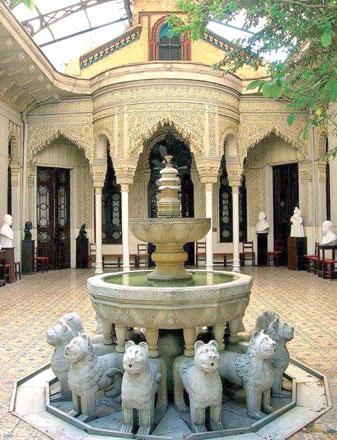You are here
Scholars see growing interest from Spanish, Arab students in exploring shared roots
By Dana Al Emam - May 30,2016 - Last updated at May 30,2016
AMMAN — Enhancing translation of original writings from Arabic into Spanish and vice versa is central for boosting cultural interaction and common understanding, according to academics.
They agreed on the need for more mutual cultural and intellectual activities that would strengthen the ties between Spanish students interested in learning more about Arabic culture, art and history, and their Arab counterparts.
In a recent interview with The Jordan Times, Jose Puerta Vilchez, the professor of history, of art at the University of Granada, cited an "unprecedented" interest in Al Andalus and Arabic culture, and heritage among Spanish researchers and young students, who are particularly interested in the modern Arab world.
Although the majority of art students at his university are interested in contemporary American and European arts, those who study Islamic art, he said, are captivated by its beauty and become more interested in studying it further.
Puerta Vilchez said Spanish people respect the legacy of Muslims in Andalusia, adding that the majority "feels there is something untrue and unconvincing in the superficial and stereotypical narrative that media outlets present about Arabs".
He added that Alhambra is the clearest example of the contributions of Arabs in Spain, as it includes "the best published poetry collection, printed on the walls".
The uniqueness of the palace comes from the fact that the calligraphy it contains is not available anywhere else and is engraved into outstanding architecture, said the expert, who is visiting Jordan to deliver a series of lectures on Alhambra and Spanish studies of Arabic heritage.
Alhambra is a "human treasure" that embodies harmony and unity among sophisticated poetry, agriculture, water and architecture, according to Puerta Vilchez, who said he finds new details every time he visits the palace.
As opposed to historical norms, the palace was not demolished during later reigns and remains almost unchanged today, he said, adding that the European rulers, that followed the Arabs, were aware of the building's aesthetic value.
At the beginning of the 20th century, the Spanish started giving further attention to Alhambra as a tourist destination with unique architecture.
Around 1.3 million tourists visit the palace annually from all over the world, and it is the most visited site in Spain, Puerta Vilchez said.
But many visitors are not aware of the poetry engravings in the palace.
Alhambra, so as other sites of Arab architecture in Spain, can be used as a clear response to those who try to distort the image of Arabs, said Salah Jarrar, a former culture minister and former president of the University of Jordan.
"Alhambra is not only a building… it is an example of precision, vision, thought and art that cannot be combined in the people that the media tries to depict [as examples of Arabs]," added the author of several publications on Arab-Spanish interactions and literature throughout history.
He told The Jordan Times that Arabs benefitted from the expertise of other nations when building the palace and added their own touch, similar to how they benefitted from other civilisations in fields such as philosophy, medicine and agriculture.
Jarrar agreed with Puerta Vilchez on the growing interest in Al Andalus and its Arabic heritage among Jordanians, adding that Arabic language and history departments at Jordanian universities teach literature from Al Andalus, which gives young people a glimpse of "a beautiful civilised past of common Arabic and Spanish heritage, during a time of declining beauty".
Furthermore, he highlighted the role of Spanish archaeological missions in Jordan and their excavations in a number of locations, including Quseir Amra and the Citadel as additional factors for enhancing that interest.
Jarrar said Alhambra, with its rich engravings of poetry, Koranic verses, prayers and proverbs in various calligraphy styles, could be an area for boosting cross-cultural studies between Arabs and Spaniards.
"Alhambra is a model of the love of developed life, one that should spread... [rather than] that of wars and destruction," Puerta Vilchez said.
Related Articles
AMMAN — Jordanian audiences are getting a taste of the Arab culture present in Latin America through “Alhambras: Neo-Arabic Architecture in
AMMAN — The Spanish embassy and Instituto Cervantes in Amman are hosting a photo exhibition of works by the renowned Spanish photographer, J
AMMAN — HRH Prince Hassan on Wednesday praised the work of Spanish Arabist, historian and translator Emilio García Gómez, noting that “his t


















